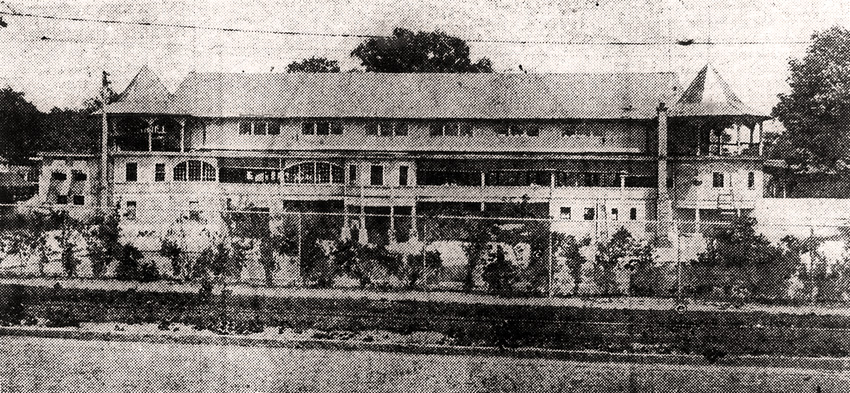
Pavilion and pool, viewed from N. 4th St. Streetcar tracks in foreground. Ohio State Journal, July 4, 1926 |
||
As the park entered its second decade in operation, changes were in order. The genteel pre-war world was gone forever. Now it was the Jazz Age. Fast, risk-taking, adventurous, streamlined, and self-consciously modern. Indianola transformed itself to keep pace with the times. After the 1922 season, the park underwent a change in management. Over the winter, the new owners invested thousands of dollars in rebuilding the park. For weeks before opening day, ads trumpeted “A Greater Indianola” and “1923: The Biggest Year of All.” Improvements and repairs were made all around. All sorts of new rides were added. Among them:
For the 1926 season, the park invested thousands of dollars more in renovations and repairs. The pool was brought up to date, new filters were installed, and the pavilion, now called "Danceland," was given a more contemporary look. Vaudeville continued for a while at Indianola but, along with band concerts, it was on the way out. By mid-decade, dance bands were the favored entertainment at the park. Hot jazz dance bands like Phil Baxter's Texas Tommies and Tom Howard's Melody Lads were especially popular with flappers and their beaus. The 1920s saw Indianola become more aggressive in advertising and promotions. The dance hall held theme nights like "University Night" or "Carnival" and contests pitting old-time dances against the dances of the Twenties. The photogenic casts of plays at local theaters were invited to come for a swim and be photographed for the newspapers. Indianola bathing beauties were photographed for the local papers. The park sponsored swim and tennis teams and hosted tournaments. All the while, it labored to maintain its reputation as a clean, safe, wholesome environment. "A clean and orderly park for clean and orderly people" was the park's motto. |
|
|
![]()


